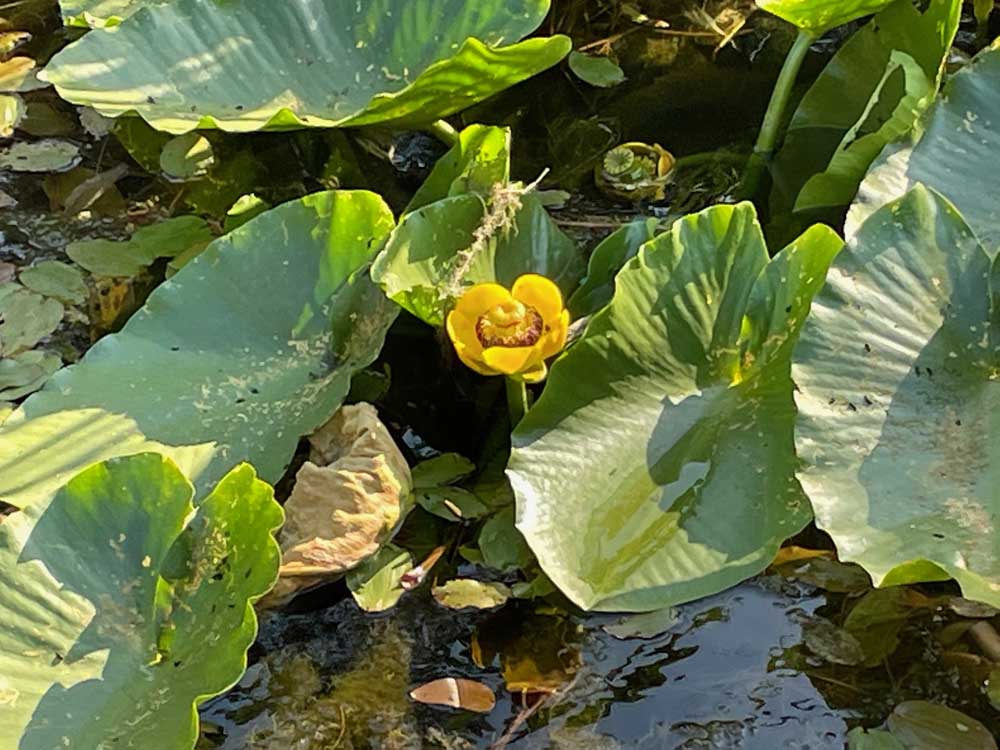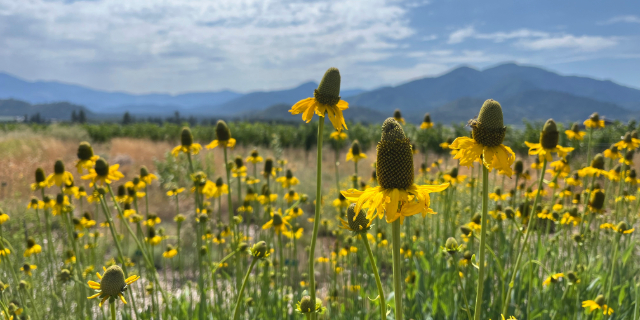GARDEN PLOTS: A gardener gives thanks to our Indigenous land stewards
Published 6:00 am Wednesday, November 22, 2023

- The yellow pond lily (Nuphar polysepala) was an important source of food and medicine for Modoc and other Indigenous groups in our area. The Modoc used plant cultivation practices that provide useful guidelines for sustainable gardening today.
“Wherever we are, we are on Native lands. At the Southern Oregon Research and Extension Center [in Central Point], we are on the traditional lands of the Takelma People who were forcibly removed and to whom we owe an unpaid debt of land, culture and history.”
Trending
— Rachel Werling, Oregon State University Land Steward Program, 2023
At the beginning of a recent presentation about growing native plants, OSU Land Steward coordinator Rachel Werling paid tribute to the original land stewards of the Rogue Valley. She invited participants to learn more about native lands on which they live through a website called Native Land Digital (https://native-land.ca). Users can type in their address to access a map of corresponding Indigenous territory and a list of Indigenous groups who occupied the land, as well as information about specific Indigenous nations, languages and treaties.
November, a traditional time in our country for giving thanks, was designated National Native American Heritage Month by President George H.W. Bush in 1990. That makes Thanksgiving a fitting time to recognize the Native people who cared for the land on which we now live and garden.
Trending
When I typed in my street address in southeast Medford, I learned it was once the home of the Modoc (maklaks, translated as “people”), now federally recognized as the Klamath Tribes in Oregon. When the Applegate Trail was completed in 1846, thousands of European-Americans settled in the area. Many of the Modoc living here died of diseases or were killed in battle; most who survived were forced to relocate to reservations in Oklahoma during 1872-73.
In 1909, the Klamath Tribes were permitted to return to Oregon. Today, about 600 Modoc live in their ancestral homelands in Klamath County. Another group who remained in Oklahoma is now federally recognized as the Modoc Nation.
As a gardener, I’m interested in how the Modoc cultivated plants before contact with European-American settlers. Although they migrated seasonally as hunter-gatherers, the Modoc people maintained familial campsites around their hunting and gathering grounds. They utilized a range of cultivation practices at their gathering sites, intended to increase the quantity and quality of culturally significant plants.
Two of these plants are black huckleberry (Vaccinium membranaceum) and yellow pond lily (Nuphar polysepala). Women, children and the elderly harvested huckleberries in the subalpine zone of the Cascade Mountains, and they gathered pond lilies in lower-elevation marsh areas. The fleshy rootstalks of the pond lilies were boiled or roasted as vegetables and ground into powder for medicine, and their seeds, called wokas, were crushed into flour for bread.
But the Modoc did more than merely gather the yellow pond lilies. They prevented over-harvesting of the plants by collecting only fully ripened seed pods from their dugout canoes, making zig-zag patterns across the water.
Researcher Doug Deur of Portland State University said, “Seed harvesters recognized that prolonged picking in one location would exhaust the supply in the short term, possibly reduce seed reproduction in the long term and, in turn, possibly increase the amount of labor required to find available seed pods…”
Other plant cultivation practices included weeding out competing marsh plants, such as sedges and cattails (used for weaving mats and baskets), and carrying out “first food” ceremonies, during which a portion of the first pond lily and huckleberry harvests were scattered to replenish plant populations. At the end of the season in early fall, portions of the gathering sites were selectively burned to control weeds and rejuvenate the desirable plants.
According to Deur, all of these Indigenous cultivation practices were “ritualized expressions of the reciprocal bonds between human and plant communities.”
On Thanksgiving Day, when the typical American consumes more than 4,000 calories (twice the average person’s recommended daily intake), it’s notable that the traditional diet of the Modoc and other Indigenous groups who lived in our area was a healthy one. Their diet did not include sugar, dairy, beef, pork, wheat flour or heavily processed foods. Instead, they ate deer and elk, waterfowl, fish (particularly salmon), as well as edible bulbs, berries, seeds and plants.
Traditional Modoc cultivation and dietary practices offer useful guidelines for sustainable living and gardening today. That’s why this gardener gives thanks to our Indigenous land stewards.









